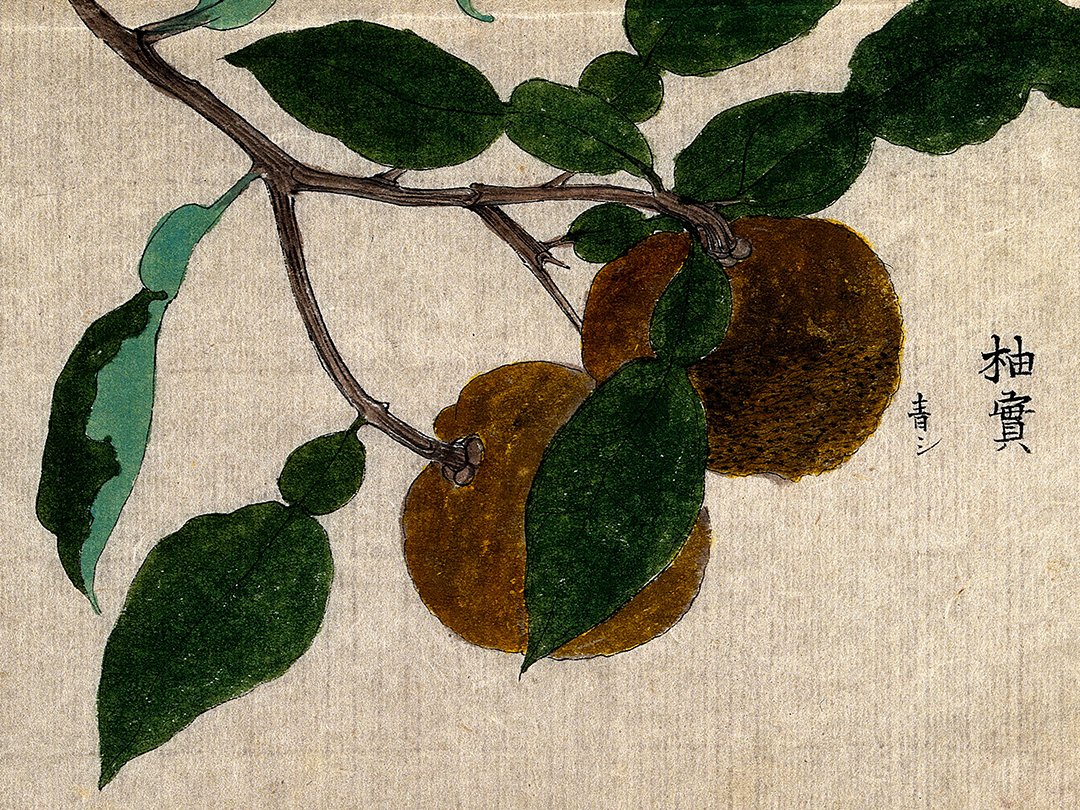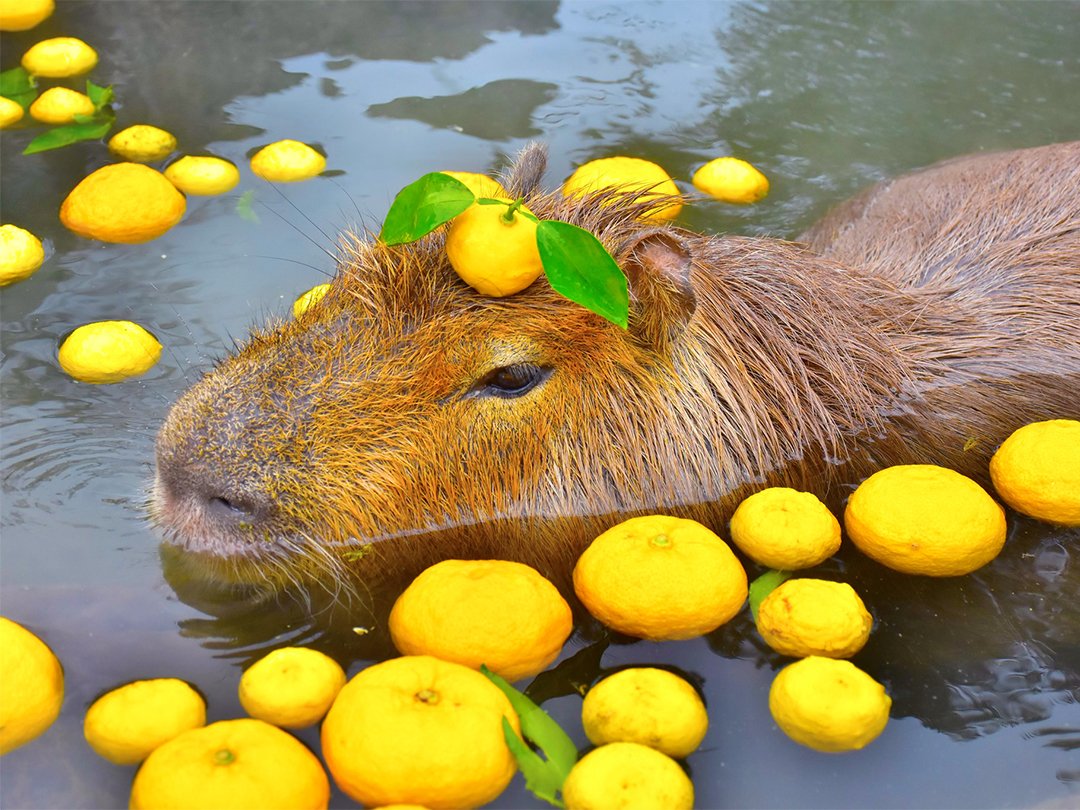Hail Yuzu, Citrus King

The Asian citrus has skyrocketed to global popularity.
Cover photo: Holding a yuzu citrus attached to a stem with leaves (2021). Photo by DannyWithLove.
Yuzu is a citrus fruit popular in Japan. It looks like something of a cross between a lemon and orange and the taste is reminiscent of lime or grapefruit, accented with floral notes. Yuzu are spherical with a bumpy rind and they’re utilized to flavor a variety of food and drinks such as salad dressing, jams, juices, and sake.
You may know yuzu from ponzu sauce, of which it is a key ingredient. Paired with honey, yuzu also makes for excellent hot drink (my favorite choice at Starbucks).
My first-ever taste of yuzu was during my initial trip to Japan in 2016. I experienced yuzu in soda and soon after as a marmalade served with ice cream. I found it so enchanting. It was delicious and refreshing, familiar yet completely new. I was immediately obsessed.
Yuzu has an intoxicating aroma which, in the words of “drinks expert” Alice Lascelles, “smells like sunshine”. In fact, according to one study, yuzu fragrance has the ability to alleviate stress. Thanks to its calming scent and antioxidant properties, yuzu is also a popular ingredient in skin-care products.
In a 2019 partnership with the Rijksmuseum in the Netherlands, the cosmetics company Rituals unveiled the Amsterdam Collection which combines Dutch tulips and Japanese yuzu in “tribute to the historic connection between [the] East and West” in Holland.
Yuzu branch with two fruit, watercolor with ink on paper, by an unknown artist (undated, possibly 19th century). Via the Wellcome Collection (color-corrected and cropped).
In partnership with the Rijksmuseum in the Netherlands, the cosmetics company Rituals created the Amsterdam Collection which combines Dutch tulips and Japanese yuzu, packaging designed by Tim Notermans Design (2019). Photo by an unidentified photographer and via Tom Notermans Design (cropped).
I had never had a fresh yuzu until recently. I had so desperately longed for it. As writes Helen Rosner for The New Yorker, “even the brightest processed-yuzu product is a tinny AM radio compared with the full, lush surround sound of the fresh fruit.”
The price for just one yuzu ranges from 100 yen ($1) to 300 yen ($2.75).
Upon my first taste of fresh yuzu, I realized the fruit has a high acidity and is very bitter. The inside of a yuzu fruit is filled with large seeds, leaving little room for juice. Though what little juice can be retrieved is quite potent, and is best used sparingly. Much of its flavor can also be found in the rind.
Numerous health benefits have been attributed to yuzu, which contains three times as much vitamin C as lemons. The citrus is also believed to improve blood flow and memory.
Yuzu is a winter fruit, with peak season lasting from November to January. Known as yuzuyu, it is a Japanese tradition to bathe with yuzu on winter solstice to protect oneself against the cold and flu. (While the smell is therapeutic, the acidity is quite biting.) Since 1996, capybara at the Izu Shaboten Zoo also participate in the annual event.
A capybara enjoys a yuzuyu at Izu Shaboten Zoo’s annual winter solstice event, Itō, Shizuoka, Japan (circa 2018). By an unidentified photographer and via Moshi Moshi Nippon (color-corrected and cropped).
The fruit grows on upright shrubs, or small trees. Pomologist David Karp writes, yuzu is a “hybrid of a primitive citrus called Ichang papeda and a sour mandarin orange”.
Yuzu originated in China and Tibet and is believed to have been introduced to Japan and Korea sometime during the Tang Dynasty, over 1000 years ago. Since the 1960s, most of Japan’s yuzu grows in Kochi Prefecture, where it covers mountain slopes.
Yuzu fruit grows on a shrub in Kochi Prefecture, Japan (circa 2021). By an unidentified photographer and via Kochi Prefecture’s official export website (cropped).
According to the prefecture’s official export website, “Kochi’s mountainous inland has well-drained soil and a large difference between day and night temperatures, providing the ideal conditions for growing yuzu.”
Fresh yuzu is incredibly rare in the United States, which prohibits most agricultural imports due to fears of “foreign pests and diseases”. The supply is limited to yuzu plants brought to California by Japanese immigrants in the 19th century.
Within just the last few decades, yuzu has become an especially popular ingredient at high-end restaurants like the French two-star Michelin restaurant Gabriel Kreuther in New York City.
“Yuzu is the king of the citrus,” argues Joe Anthony, Gabriel Kreuther’s Chef de Cuisine. And indeed, yuja — as its known in Korea — which was once reserved for Joseon Dynasty royals can now be enjoyed by people around the world.
Yuzu is the titular ingredient of the traditional Korean punch yuja-hwachae (undated, possibly 2000s). By an unidentified photographer and via the Korean Royal Culture Cuisine Foundation and Google Arts & Culture (cropped).
Yuzu vinaigrette flavors Gabriel Kreuther’s Crown Toro Hamachi Crudo, New York City, New York, United States (2021). By an unidentified photography and via Instagram (color-corrected and cropped).











